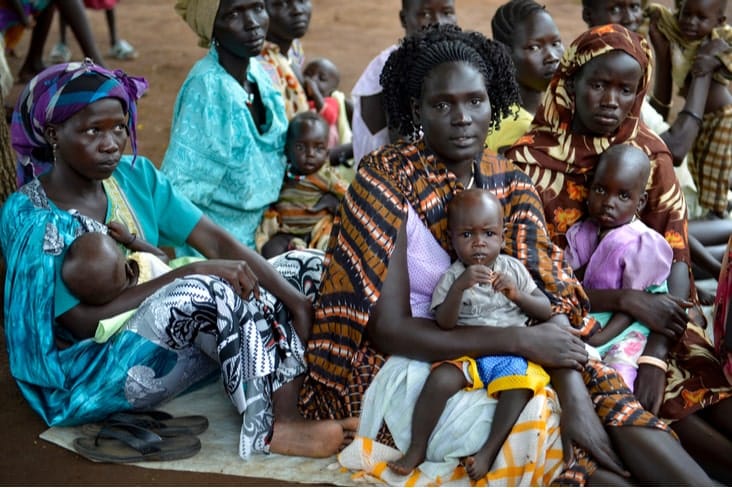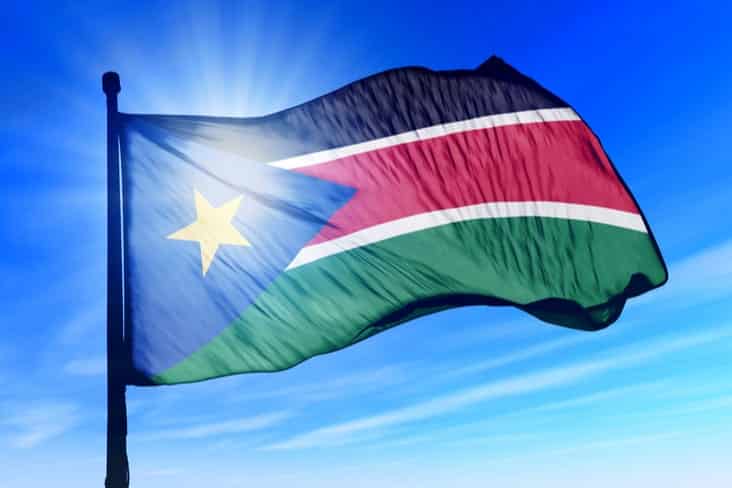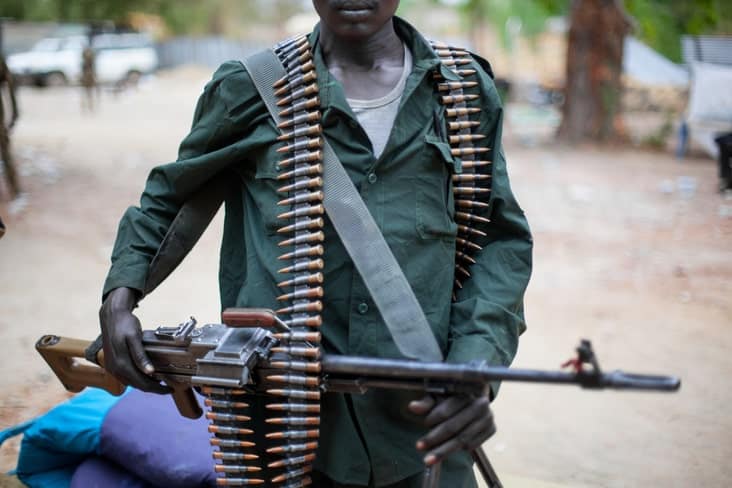The most interesting facts about South Sudan, from Africa’s newest nation and decades of conflict to “mega-herds” of migrating wildlife.

Fast facts
Official name: Republic of South Sudan
Capital city: Juba
Population: 12,703,714
Area: 644,329 sq km
Major languages: English, Arabic
Time zone: UTC+3 (East Africa Time)
Interesting facts about South Sudan
1. South Sudan is a landlocked country in Africa. Landlocked countries are wholly surrounded by land and do not have access to open sea.
2. South Sudan was once part of Africa’s largest (Sudan) and the world’s 10th largest country. Now, it ranks as Africa’s 18th and the world’s 42nd largest country.
3. The wider area of Sudan, known as Ancient Nubia, has been inhabited since Mesolithic times (Middle Stone Age), around 30,000 to 20,000 BC.

4. The name “Sudan” comes from the Arabic “bilad-as-sudan” meaning “land of the black people”.
5. From 1899 to 1955, South Sudan was part of Anglo-Egyptian Sudan and under joint British-Egyptian rule.
6. In 1956, Sudan gained independence from the UK.

7. In 2011, Sudan split into two countries, and South Sudan became the world’s newest internationally recognized country.
8. The split followed a 2005 peace agreement, which ended Africa’s longest-running civil war – the Second Sudanese Civil War. The conflict lasted 22 years, from 1983 to 2005, killed at least 1.5 million, and displaced over four million people.
9. This had followed a previous civil war that had been fought in Sudan from 1955 to 1972 between a guerrilla movement and the Sudanese government.
10. In 2013, civil war broke out yet again when President Salva Kiir accused his former vice-president, Riek Machar, of plotting to overthrow him. This led to yet another conflict that has displaced at least another four million people.
11. South Sudan’s flag consists of horizontal black, red and green stripes, separated by two white lines. The thick stripes represent the (black) people, their (red) blood and the fertile (green) land. White is for peace. The blue triangle symbolises the River Nile and the yellow star represents unity of the states of Southern Sudan.

12. South Sudan is the poorest countries in the world, with a GDP per capita PPP of just $954 USD. In 2025, it ranked last among 193 countries on the Human Development Index (HDI).
13. With with hundreds of language groups, South Sudan is one of Africa’s most linguistically diverse countries.
14. South Sudan is one of 27 countries that doesn’t have any UNESCO World Heritage Sites. However, it does have three properties on the Tentative List (properties intended to be submitted for nomination).

15. One of these sites is the Boma-Badingilo Migratory Landscape, which includes the Boma and Badingilo national parks. The Boma National Park is one of Africa’s largest reserves and home to one of the continent’s largest wildlife migrations, with as many as two million animals simultaneously migrating in “mega-herds”.
16. South Sudan ranks last in the world on the 2024 Corruption Perceptions Index (CPI), with a score of just 8 out of 100, highlighting deep governance and transparency challenges.
17. South Sudan has one of the world’s lowest life expectancies. As of 2022, it had the fifth-lowest life expectancy at an estimated 56 years.
18. The longest river in the world, The Nile, runs through South Sudan. The White Nile, one of the two main tributaries of the Nile, runs through South Sudan’s capital city. It joins the other major tributary, the Blue Nile, at Khartoum in Sudan.

19. The name Juba derives from Djouba, another name for the Bari people of South Sudan.
20. There are over 60 different ethnic groups in South Sudan.
21. South Sudan is home to the Sudd, Africa’s largest wetland and one of the largest tropical wetlands in the world.
22. South Sudan suffers from some of the world’s worst air pollution. As of 2020, it had the ninth-highest number of deaths caused by air pollution.
23. While pollution remains a major concern, CO₂ emissions remain low at about 0.14 metric tons per person each year, owing to its minimal industrial output.

24. South Sudan is among the world’s most dangerous countries to visit according to the International SOS Travel Risk Map. It has been assessed as carrying an ‘extreme travel security risk’.
25. South Sudan was once a major slave-trading area in the 19th Century in the Arab slave trade.
26. According to the UK Foreign Office, South Sudan is also one of 24 countries deemed to be entirely unsafe for tourists to visit.
27. Due to the continued unrest in South Sudan, there are deep concerns about the population. The Global Hunger Index (GHI) is an annual report produced to measure hunger around the world and suggests South Sudan is likely suffering from alarming levels of hunger.
Explore more from Africa
Every effort has been made to verify these facts about South Sudan. However, if you find an error or have any questions, please contact us.
Caitriona Maria is an education writer and owner of The Facts Institute. A teacher for seven years, she has been committed to providing students with the best learning opportunities possible, both domestically and abroad. Dedicated to unlocking students' potential, Caitriona has taught English in several countries and continues to explore new cultures through her travels.